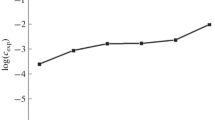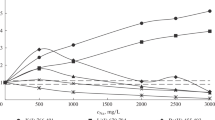-7
absorption per square root of detection bandwidth are obtained if sufficient laser power is available and if the absorption is also subject to additional modulation. The analytical versatility of these techniques is demonstrated by quantitative analysis of very low concentrations of (i) Cr(VI) species in tap water and (ii) chlorinated poly-aromatics (chlorophenols) in plant extracts, both after chromatographic separation. The atomic absorption measurements were performed in an air–acetylene flame (Cr) and in a low-pressure microwave-induced plasma (chlorophenols).
Similar content being viewed by others
Author information
Authors and Affiliations
Additional information
Received: 2 April 1998
Rights and permissions
About this article
Cite this article
Koch, J., Zybin, A. & Niemax, K. Element-selective trace detection of toxic species in environmental samples using chromatographic techniques and derivative diode laser absorption spectrometry. Appl Phys B 67, 475–479 (1998). https://doi.org/10.1007/s003400050532
Issue Date:
DOI: https://doi.org/10.1007/s003400050532




